In the summer of 2024, earth was hit by a heat wave, especially in the Northern Hemisphere. The World Meteorological Organization (WMO) announced that the global average temperature for 2024 is expected to be higher than the previous year and will be the highest on record. Spain experienced widespread flood damage from torrential rains; meanwhile, in Australia, a heat wave and dry weather were the primary causes of large-scale forest fires. Extreme weather events, such as heat waves, torrential rains, and droughts, are believed to be caused by global warming. Further, such events are occurring frequently worldwide and causing extensive damage.
The United Nations Environment Programme (UNEP) pointed out that if countries do not strengthen their climate change measures, the global average temperature will increase by up to 3.1° by the end of this century, well beyond the "1.5° target" set by the Paris Agreement. As the "climate crisis" becomes more apparent, there is no time to spare to strengthen countermeasures through international cooperation and collaboration.
Under these difficult circumstances, the 29th Conference of the Parties (COP29) to the United Nations Framework Convention on Climate Change (UNFCCC) began on November 11 in Baku, the capital of Azerbaijan (a former member of the Soviet Union located on the west coast of the Caspian Sea), and continued until November 22. The most important topic on the agenda was new funding (climate funds) for developing countries, and the focus will be on whether a shared sense of crisis can lead to an agreement. There is a demand to raise the current greenhouse gas (GHG) emission reduction targets of countries and hold advance discussions toward achieving the "1.5° target."
However, with the victory of Trump in the US presidential elections, who is reluctant to take measures against global warming, it is almost certain that the world's second largest GHG emitter will once again withdraw from the Paris Agreement. The re-emergence of President Trump is likely to cast a dark shadow over COP29 negotiations, placing global warming countermeasures, which the Paris Agreement as the basic framework premised on international cooperation, at a crossroad. Hence, the international community is highly interested in monitoring how much progress will be made at this year's conference. However, it was difficult to predict the kind of the agreement that would be reached.
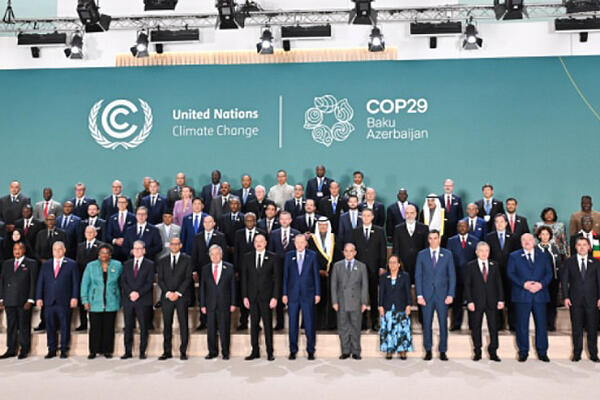
Provided by the Azerbaijani government
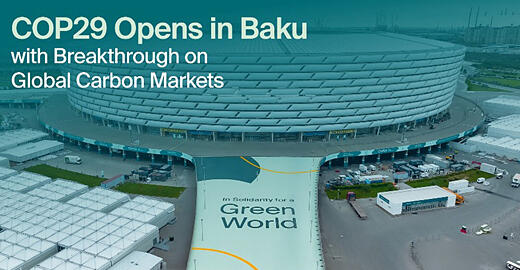
Provided by the Azerbaijani government
Developing countries seeking "trillions of dollars a year" in climate funds
The main focus of the working-level meetings leading up to COP29 was the new climate funding support targets for developing countries beyond 2025. Funds for developing countries have been a major topic of discussion at previous COPs. Developing countries have been demanding that developed countries "adapt" to global warming and provide funding for undertaking measures that reduce GHG emissions, which increase with economic growth. Their demands are grounded on the claim that "global warming is the responsibility of developed countries, which have been emitting large amounts of GHGs such as carbon dioxide" and that "we are the ones who suffer severe damage even though we do not emit as much GHGs."
At COP15, held in Copenhagen in 2009, developed countries pledged to contribute $100 billion per year in climate funds by 2020. At COP21 in 2015, when the Paris Agreement was adopted, it was agreed that the funding targets to be met by 2020 will be reaffirmed, that they will continue through 2025, and that new funding will be prepared for the period after 2025. However, the promise was not kept until 2020, and funding finally reached $100 billion in 2022, two years later.
New climate funding after 2025 was the top priority agenda item at this year's COP29. In the working-level meetings, developing countries sought "trillions of dollars per year," which is much higher than the current support target of $100 billion per year. The reason for this is that they need a large amount of money for the expansion of renewable energy and other activities to minimize GHG emissions.
The developed countries, meanwhile, strongly objected to this demand, saying, "It is impossible to accept this amount of money." The developing countries did not seem to think that they could reach agreement on the "trillions of dollars per year" funding from the start, and the focus was also on by how much the amount would be increased to settle the issue.

Provided by WMO
WMO warns that Paris Agreement is in danger
According to a report released by UNEP on October 24, 2024, the total global GHG emissions in 2023 increased by 1.3% from the previous year to 57.1 billion tons, the highest ever. Total emissions have been increasing since 1990 despite the efforts of many countries, particularly since the adoption of the Paris Agreement in 2015.
The UNEP report noted that even if the countries' current reduction targets by 2030 were to be realized, temperatures are expected to rise by 2.6°−2.8°. The report highlighted that to achieve the "1.5° target," total emissions must be reduced by 42% by 2030 and by 57% by 2035, compared to the 2019 level. The gap between the required GHG reductions and current emissions is extremely large.
On the first day of COP29, November 11, 2024, the WMO announced that the global average temperature up to September in 2024 was the highest on record, 1.54° higher than the temperature in pre-industrial times. It cannot be concluded that "the 1.5° target has not been achieved" based solely on the yearly average temperature of 2024 as it is necessary to look at the situation over a period of years. However, the WMO warned, "The Paris Agreement is in grave danger."
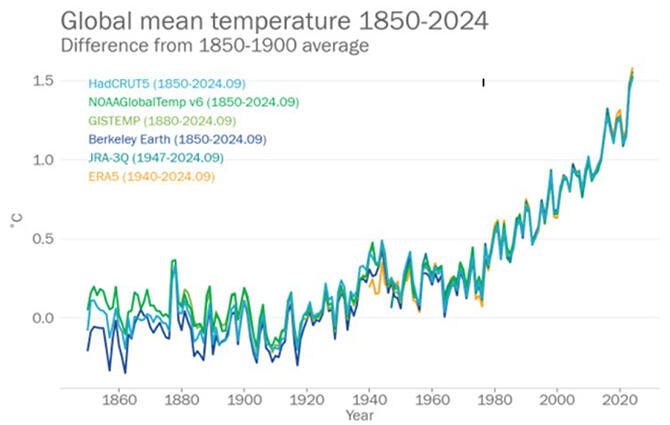
Provided by WMO
Against the backdrop of this sense of crisis, Azerbaijan's Minister of Environment and Natural Resources Babayev, chairman of the COP29, urged representatives of other countries to strengthen GHG reduction measures at the opening ceremony on November 11, saying, "People are dying in the dark (due to the effects of the climate crisis), but this cannot be resolved with mere sympathy."
Further, he emphasized, "Negotiations will be difficult, but we will make every effort to bridge the gap between the parties." UNFCCC Executive Secretary Stiel added, "If two-thirds of the world's countries (which produce most GHGs) cannot quickly reduce their emissions, all countries will pay a brutal price (in the form of devastating damage from the climate crisis). "We must not let the '1.5° target' slip away from reach," he said.
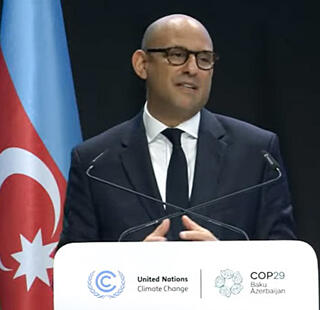
Provided by UNFCCC Secretariat
Trump: "Drill, baby, drill!"
The U.S. presidential election on November 5, 2024 was won by the Republican candidate Trump. He came close to a "landslide" victory that overturned previous expectations, defeating Democrat Harris, who had supported the Biden administration as vice president, in the "seven battleground states." In addition to this, Republicans secured a majority of seats in the Senate and House of Representatives in the congressional elections. The Biden administration had emphasized environmental policy, but these election results raise the possibility of a major shift in the US environmental and energy policy under the "America First" approach.
According to US media reports, Trump had declared his withdrawal from the Paris Agreement in a campaign pledge. He also made clear his emphasis on the oil and natural gas industry as a "job creator," repeatedly saying such things as "Drill, baby, drill" in the battleground states. He even called the Biden administration's climate change measures "the new green scam."
Trump is expected to take steps to withdraw from the Paris Agreement as soon as possible after he is sworn in as President again in January, 2025. The previous withdrawal period from the Paris Agreement was a few months, but this time it could last three years or more. Furthermore, the US may also withdraw from the UNFCCC. The US government may also withdraw its contribution to the fund for developing countries (the Green Climate Fund), which it had already pledged.
In addition to the fossil fuel utilization policy, if the Biden administration's measures to promote the sales of electric vehicles (EVs) and other measures are repealed, GHG emissions and fuel consumption by automobiles will be deregulated and emission reductions in the transportation sector, which is the largest contributor of GHG emissions in the US, will stagnate. Additionally, the feasibility of achieving the US's current emission reduction target (NDC) of "50%−52% reduction in GHG emissions by 2030 from 2005 levels" could be greatly reduced.
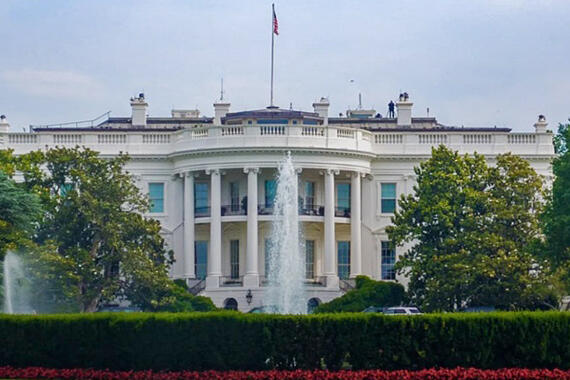
Provided by the U.S. White House
Fear of undermining the momentum of the international community
International cooperation and partnerships are a prerequisite for tackling global-scale issues, such as climate change countermeasures. However, a major shift in US environmental and energy policies could greatly impact consensus building in the international framework for global warming prevention represented by the COP and Paris Agreement, making the already difficult negotiations even more difficult.
Such a major shift in the US policy due to the "return of the Trump presidency" could lead to "excuses" for countries that are reluctant to take action on climate change and could dampen the momentum for "the international community to come together as one to stop the climate crisis."
However, this is not the first major shift in the US environmental and energy policy with the return of President Trump. In the past, the world's approach to the global environment has been tossed around with each change in Democratic and Republican administrations. The Democratic Clinton administration, which began in 1993, signed the "Kyoto Protocol," but the Republican Bush administration, which began in 2001, withdrew from it. However, the Democratic Obama administration, which came into power in 2009, has again taken an aggressive stance on climate change measures, including a significant increase in the budget related to renewable energy, and agreed to the Paris Agreement in 2015.
During this period, the COP has been held annually since 1995. In 2015, the Paris Agreement was established at COP21 in Paris, France, replacing the Kyoto Protocol. Little by little, progress has been made in combating the climate change.
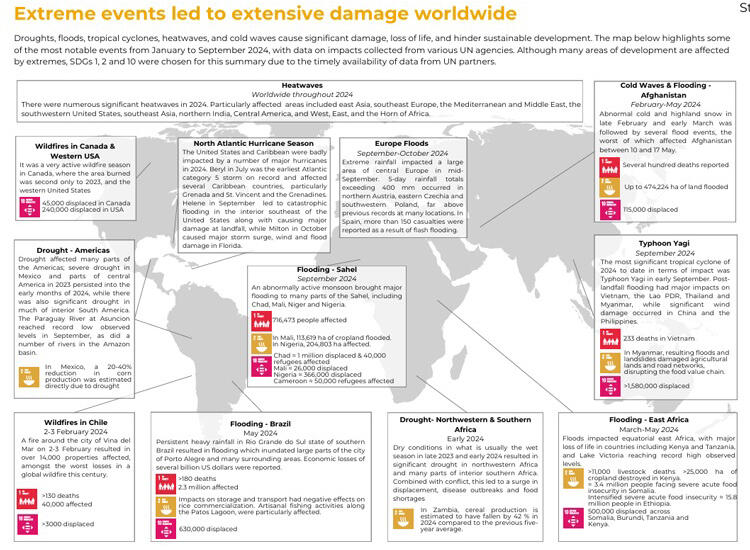
Provided by the WMO
Major transformation of the social and economic structures is required
Turning to the international situation, the state of war that began with the Russia's invasion of Ukraine in 2022 continues to this day. In the Palestinian territories of the Middle East, fighting between Hamas and Israel that began in October, 2023 with attacks inside Israel by the Islamic organization Hamas shows no sign of abating. The trend of division within a country, such as that observed in the recent U.S. presidential election, is also occurring in Europe.
As these severe circumstances continue, threatening to tear the international community apart, Trump's tendency toward nationalism is visible in Europe, which has been at the forefront of global warming countermeasures until now. In the European Parliament elections in June, 2024, parties promoting environmental policy lost seats. Such moves by the US and Europe could create a fray in the international framework for climate change countermeasures.
However, if the international community gives up on the idea of uniting to confront the common threat to humanity—intensifying natural disasters caused by the climate change—the global environment in the second half of this century could be in an unimaginably severe state. The only way to move the COP regime forward is to share the climate crisis.
There are no national borders for increasing GHGs in the atmosphere. The reality of the increasing severity of natural disasters calls for countries to decarbonize and make a major shift to renewable energy−based social and economic structures.
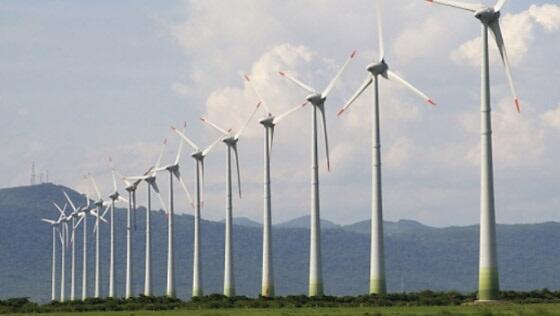
location and photo article are unknown, provided by UNEP
(UCHIJO Yoshitaka / Science Journalist, Guest Editorial Writer, Kyodo News)
Original article was provided by the Science Portal and has been translated by Science Japan.




